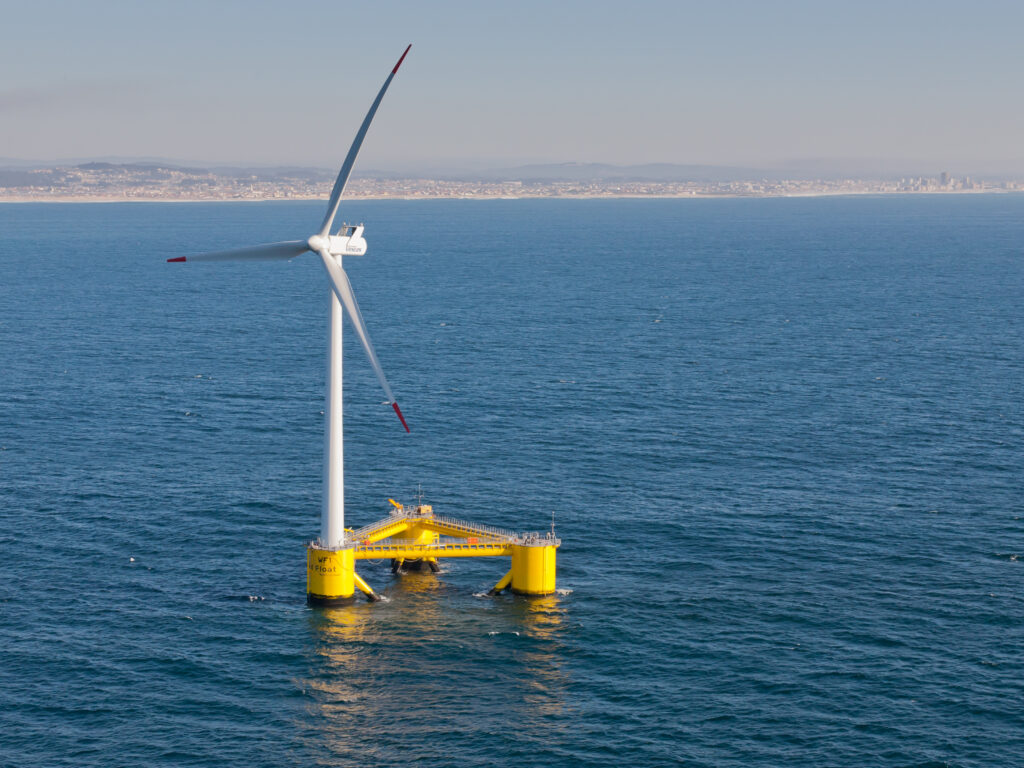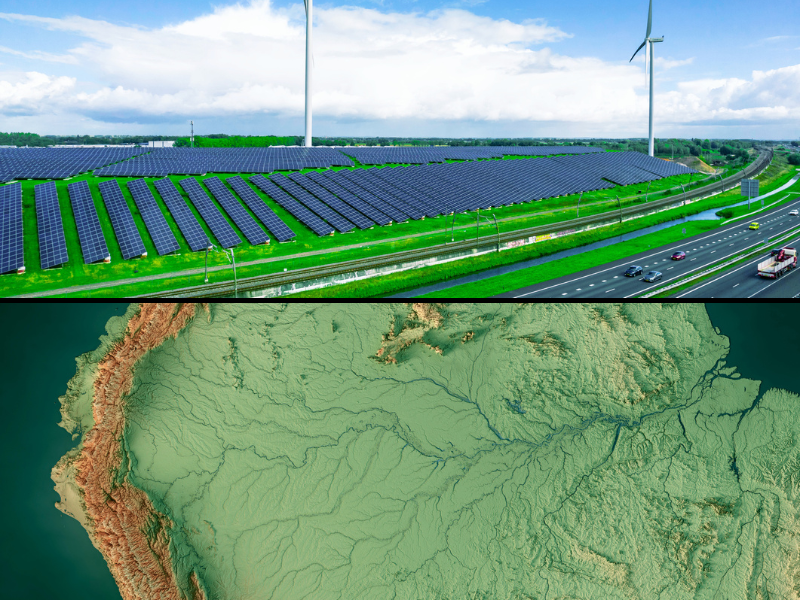The Government of Maine has really big plans for floating wind, a floating net zero fantasy, in fact. Since floating wind power is the next big green thing, it is worth taking a close look at this ruinous vision.
Floating wind is a fad, not an established technology. It has yet to be built at utility scale or tested in a hurricane. The world’s biggest grid-connected system is a tiny 50 MW and just came online off Scotland.
The cost of floating wind is necessarily much greater than fixed wind. A fixed wind tower sits on a simple monopile, while a floating tower sits on a huge complex structure called a floater. We are talking about massive 500-foot towers with 500-ton turbines on top and 300-foot blades catching the wind.
The floater has to be large enough to keep this monster tower from blowing over. Then, it has to be even bigger to contain enough air to be buoyant. It also has to be anchored to the ocean floor in ways that require a lot of different mooring lines.
The small existing floating generator systems cost around three times what fixed wind costs per MW, but the big and hurricane-proof generators might cost even more. Over a hundred designs have been proposed, which shows just how immature Floating wind technology is.
Which brings us to Maine’s floating green dream, a costly nightmare for its people. When it comes to electricity use, Maine is a small state with average generation of just around 1,500 MW. But in an act of madness, they passed a law saying they will buy 3,000 MW of floating wind. Fixed wind is not an option because the Gulf of Maine is too deep.
How do they justify buying so much floating wind? Simple, it is a net zero fantasy. They have a 115-page “Maine Offshore Wind Roadmap” that explains it.
For a start, they shut down all their existing combustion generators, mostly burning either gas or wood. Maine is 90% forest, so there is a lot of wood. Then, they electrify all the other forms of combustion. For example, 60% of homes are heated with fuel oil, so they switch to heat pumps or something that works in really cold weather. Of course, all the cars and trucks are electric.
The projected cost of the 3,000 MW of floating wind is huge. Using the reported three times fixed wind figure, I get a rough estimate of $50 billion for construction and an equal amount for financing and profit, giving a total cost of around $100 billion. It could be a lot more once large-scale and hurricane-proof technology is developed if it ever is.
Apparently, the astronomical cost is no object because it is never mentioned. Not in the law, roadmap, or various technical support documents. Jobs are frequently mentioned, but they are part of the cost. But then, too, there is the much larger cost of the energy transition, without which the floating wind is simply not usable.
Clearly, the floating wind development may never occur, which brings us back to the present day, where things get really crazy. The State of Maine has started the process to build a huge new port specifically to handle this floating wind fantasy. I am not making this up.
With fixed wind, the shore facility is merely a marshaling yard where the pieces are held until barged out to the offshore site for assembly. There are just four big pieces: the monopile, tower, turbine, and blade set.
Floating wind is completely different because the huge floater is built at the port. The tower, turbines, and blade set are mounted on the floater there as well. Then, the whole assembly is towed to the site and anchored to the sea floor using eight or more mooring lines.
So this is really a highly specialized shipyard, a floater factory, not a port. There will have to be one or more dry docks to build the huge floaters in, plus a great deal of specialized equipment, especially cranes. Reportedly, steel floaters for a 15 MW turbine could typically weigh 3500 to 4500 tons, while concrete floaters would be in the range of 17,000 to 22,000 tons.
The final configuration is completely unknown until the floater design is finalized. Note, too, that this shipyard might only be in operation for the few years it takes to build 3,000 MW of floating wind generators.
The presently estimated cost of this shipyard/port is a bit under a billion dollars but it could easily be more depending on the complexity of the design. The cost of a unique new system tends to go way up when the engineering is actually done.
Starting this billion-dollar port project now is just foolish. It is highly likely that the required energy transition will not occur. The electricity will be very expensive, perhaps four to five times the present cost. Plus, we have no idea what the technology will look like, assuming it can be made to work in the tempestuous waters off Maine.
The people of Maine are unlikely to accept these onerous conditions, nor should they. This whole nutty project needs to be reconsidered.
Photo by Untrakdrover. Creative Commons Attribution-Share Alike 3.0 Unported.





